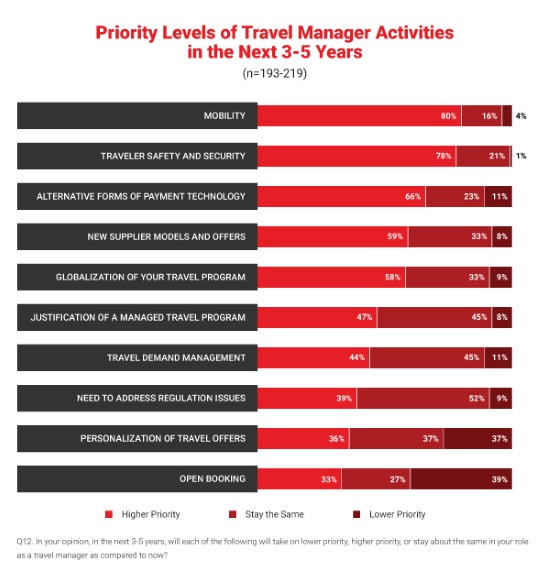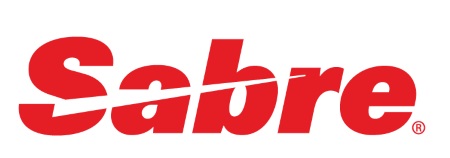
Travel risk management – five things you can’t afford to ignore
By cameron in Uncategorized
Although it’s sometimes difficult to judge the shelf life of emerging trends in the travel and technology industry, one thing is certain – the need for travel risk management isn’t going away.
NB This is a viewpoint by Florian Tinnus, Sabre Travel Network
Below I’ll outline best practices – backed by research – that will help travel managers source the best travel risk management (TRM) solutions for their travel program. Sabre recently launched the Traveler Experience Platform that includes a mobile travel risk management feature that provides a smarter, faster, more accurate approach to locating and communicating with traveling employees.
Travel risk management should be a higher priority
In a study released in 2015 by GBTA and Sabre titled Travel Manager 2020, 78% of travel managers named traveler safety and security one of their top priorities over the next three to five years.

Due to the increasing concern from travelers about their own safety and security while traveling, more resources need to be shifted away from cost-saving measures and invested in ways to better serve and protect their travelers. Underperforming technology or lack of a TRM solution all together creates a halo effect that goes beyond the travel program – negatively impacting turnover and employee burnout. The feeling of insecurity while traveling impacts an employee’s personal and professional life – limiting productivity and increasing the wear and tear of business travel.

Based on a study by ACTE titled Traveler Behavior: Threats & Opportunities, “67% of travelers state that there is a psychological effect on either them or their families when traveling to a region where they may not feel safe”.
This data points to not only a technological need for more effective TRM solutions but also an underlying burden placed on the shoulders of travel managers to ensure their employees are safe and supported while traveling for business. Now more than ever, a safe and effective travel program equals better business.
The five points below are key factors that drove the need to bring this to market.
Traveler privacy is evolving
The concerns around data privacy that travelers once had have now evolved, making it easier for travel managers to find a balance between more innovative security procedures and protecting traveler information. Findings from “Traveller Behavior: Threats & Opportunities” suggest that “35% of corporate travel executives believe that travelers are becoming less sensitive about privacy as terrorism threats increase. This perception is matched by the travelers own assessment, with 33% saying they were less sensitive”.
Travel is a foundational part of business, but it’s evident that traveler expectations are changing and so should travel policies.
Track beyond the PNR
Tracking is still one of the biggest challenges for establishing a comprehensive TRM solution. According to “The Digital Business Traveler” study released by GBTA and Sabre, one quarter of business travelers surveyed work at companies that do not have access to technology that will track them when they’re traveling.
Furthermore, travelers are eager for more tracking capability from their employer with a majority willing to “allow their company to track their location via their mobile device for duty of care purposes”.
![]()
It’s not a surprise that gathering actionable data is a significant challenge in tracking employees around the world. This is driven by business trips that include a leisure component and out of program activity which leaves gaping holes in a travel itinerary. This requires a solution that can gather travel data beyond the travelers’ PNR, even down to their actual location. Emerging TRM technology now incorporates a GPS or messaging component where travel managers can request a traveler’s current location.
The travel experience matters for the traveler and travel manager
In the event that travelers need to request assistance or communicate their status during a trip, the process is still heavily manual even though traveler expectations for technology have increased significantly over the years.
For instance, travelers may be required to download a separate app, call a toll-free number, or access information on the company’s intranet which requires internet and most likely VPN access. This process is not always conducive while in-transit or remote working.
The process from start to finish should be more “social media-like” – quick bursts of communication between the traveler and company along with an easy and accessible interface that is both intuitive and scalable. Most importantly, the experience matters for the travel manager, too. A mobile-based platform that does not require VPN connection or laptop allows travel managers to be more proactive and efficient when security events arise.
Adoption depends on key factors
Most risk management tools available today are separate from what a traveler is already using which drives sluggish adoption rates. In order to ensure employee buy-in and usage, any new technology platform is significantly more successful when integrated into the greater travel platform without the need for another tool or standalone app.
Additionally, the implementation and management of a TRM program often sits with multiple stakeholders outside of the travel department. This makes communication and defined ownership even more complicated, which has a ripple effect on how the program is perceived by the end traveler.
To ensure stronger adoption, training and education programs should be tailored to the different user types for the platform – travelers, arrangers and managers. Resources can vary from online awareness courses on how to avoid or reduce security risks when traveling, medical risks and assistance as well as country-specific preparation and intercultural training.

Choosing the right travel risk management platform
Travel managers deserve technology that is simple and seamless, which is why Sabre has developed the Traveler Experience Platform – an open and integrated product platform combining all aspects of travel into an award-winning mobile experience.
Travel managers now have the freedom to choose what products best fit their business needs including an innovative TRM feature. Travel managers can accurately track and communicate with travelers impacted by an event as well as automatically monitor travelers’ trips, proactively notify travelers that may be impacted, and requests that they “check-in” with their status all in one intuitive mobile experience.
The evaluation process should be well planned and gain the consensus of stakeholders outside of the travel department. Some necessary steps during the process:
- define key stakeholders and responsibilities before engaging technology partners
- ensure IT has a seat at the table.
- identify the objectives for your specific travel program and keep those top-of-mind when sourcing technology options
- determine risk types that are specific to your organization
- consider a door-to-door approach – evaluate risk from when a traveler arrives at the airport to when they return home.
To learn more about how Sabre is innovating solutions to support TRM, click here.

NB: This is a viewpoint by Florian Tinnus, Sabre Travel Network. It appears here as part of Tnooz’s sponsored content initiative.
![]()

